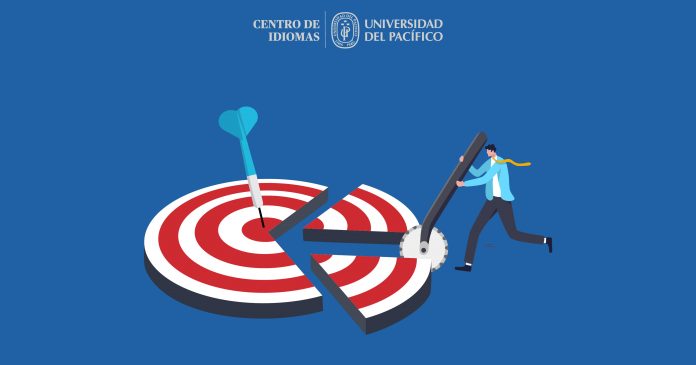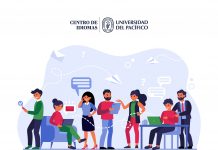Learning how to teach is an endless process since the students´ backgrounds and experience are in continuous change, as well as the context in which their learning experience builds. As important as that is the fact that the challenges that we face along our journey change their shade whether we are rookies or experienced professionals.
The current circumstances have put us to the test, and I don´t think it would be wrong to say that we have demonstrated beyond a doubt that we have been applying process re-engineering all along these months.
Yet another episode to test our mettle is around the corner: we will go back either to face-to-face classes, the hybrid version, or continue with virtual lessons. Even in the last case, like the chameleon, we need to adapt our colors or standards again to the new scenario. It is new because we will no longer be undergoing a health emergency; we will already be facing our new reality.
Even if we may think that it could be more challenging than expected, do not frighten, we are ready to face that situation. We just need to apply our pedagogical content knowledge (PCK) in the class, which basically refers to awareness of subject matter and teaching strategies. The trick is to incorporate subject matter and handle it considering the acquired familiarity of students’ learning difficulties in this new context. Thus, we must employ strategies that consider the new features.
Let´s start clearing from the beginning the objective of the lesson we must design.
Sometimes this is the root of the problem; we forget the objective of us being with our students: to help them learn the foreign language they have chosen. But it is common to “robotize,” that is, becoming somewhat, mechanical and predictable, for instance, when we teach by the book. You can check the following link to unveil more “symptoms” of having become robotized. (1)
Surely, besides there being a general objective, let´s narrow it down to the objective of the lesson. This objective is what must guide us. However, in a way or another, during the lesson we deviate from the route and we fall behind schedule. Why? Because of many reasons.
Solution: Deconstruct the objective. Look at the following picture. We can clearly identify that those parts belong to the car on the back and if we were mechanics we would know where exactly each piece should go, and we could place them back without much trouble; it might take some time, but we would know how to assemble the car. In the same way, we know what students need to know how to communicate. We just need to organize the steps to follow from the simplest to the most challenging and start the way to achieve the goal. For this we need to start thinking in DECONSTRUCTION.

Deconstruction consists of breaking something down into smaller parts. Why? To determine which ones should be done first. Let´s check the steps:
- Identify the objective of today´s lesson, for example.
- Deconstruct the objective: What basic skills do students need to develop first? What content do students need to know?
- Design activities whose objective is to develop those skills or to provide the knowledge required.
- Identify the “evidence” that will show whether students have achieved the desired results.
- Give feedback to motivate students by informing how much they have achieved or what they need to do to get closer to the goal.
Let´s see a very simple example.
- Objective: Students should be able to talk about their last birthday party.
- Deconstruct the objective:
- Skills needed: Recognize and pronounce the regular verbs in the past (-ed endings) or the irregular verbs.
- Content: Time expressions to talk about the past and party context.
- Design activities according to skills and content identified. Make sure to work on only one individual skill and that guaranteeing success is I would focus on the easiest skills needed first adding a little bit of content. For example, I would begin with the related irregular verbs and some basic vocabulary such as buy, blow up, blow out, go out, hang out, eat out and some basic vocabulary such as balloons, candles, fancy restaurant, etc. I would have students practice with this to first familiarize with the concept, and at the same time to give them the chance to start using the language to exchange information, to interact, to communicate. Inevitably my pupils will start asking for more expressions and verbs to talk about the party. For Instance, they may require knowing expressions such as dress up, pull off, pick up, turn up and so on. At this point, you would have created the need to know that information which keeps motivation alive. Then in the next lesson you can work on the pronunciation of the -ed endings within a context: the party. After that you can easily move to another kind of celebration and use the very same materials. I strongly recommend not working on regular verbs and irregular verbs in the same lesson; the objective must be achievable to guarantee success.
- Evidence of achieving goals. Since communication is the ultimate goal, you can design an activity during which students make a record of the information they collect while interacting. Monitor how they are exchanging information. To reinforce the use of expressions and pronunciation, ask students to report to their classmates what they have found. This is another chance to monitor and collect information for feedback.
- The feedback should be given without mentioning names. Make sure to begin with positive comments and then with some problems you have identified. Show what you have spotted and have them practice the correct pronunciation, for example, once more. Do not expect perfection yet. Help students with additional exercises or ideas on how to practice the pronunciation of –ed endings for example. There are many sites to review and practice. Videos in YouTube or apps on the phone. Use technology to help your students when they are not in class with you. They practice at their own pace and get ready for the next lesson. Make sure to give a specific task when suggesting links or sites. It wouldn´t hurt to open the link, for example, in class to explain students how to use it and to show how advantageous it is. Sometime students do not even try because they think it is not useful or difficult to use.
Here´s one link I always use: https://www.youtube.com/watch?v=-_WYJClELoc&t=79s.
One last idea; make sure you keep a record of what you do in class, so that at a certain point you can validate what you have used, improve it or discard it. Here´s a chart I shared in another article. It´s very simple, still very useful.
https://www.dropbox.com/scl/fi/kqcdrvrgus212emkzi6rs/Created-by-Flor-de-Mar-a-Vila-Azabache-updated-2022.docx?dl=0&rlkey=41o0m4m9ppflevfpwtnnmg06y
- https://blogidiomas.up.edu.pe/2018/02/robotizing-can-we-prevent-it/










